Why We Are Getting Fat (Part 2)
On top of a major increase in overall calorie intake and macro fluctuation that I talked about in Why We Are Getting Fat Part 1, the food industry as a whole has changed drastically, playing a major role in the increasing obesity epidemic. Be sure you read Part 1 before continuing!
Fat…All About the Dollar
With general market inflation and cost of everything on the rise, people needed to work more. Life became busier and convenient food became a staple in people’s diets. Around the same time, companies began finding ways to lower the cost of food and increase production, resulting in a major increase in restaurants, processed foods, and fast food chains using added fats and oils.
With a major increase in fat, oil, and processed food consumption comes a major increase in both calorie intake and appetite as these foods have very low satiety. Added fats (not naturally occurring fats) like soybean oils and shortening used in most commercially prepared food and sugary snacks are engineered to be highly palatable, making consumers highly addicted and wanting more.
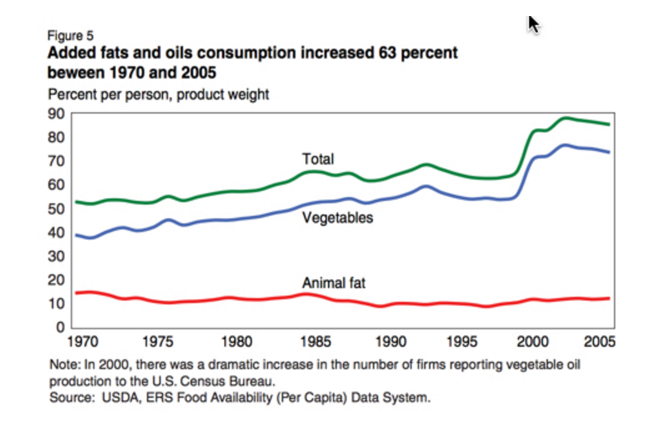
Before we start vilifying a macronutrient like fat or carbs, let’s see why this increased consumption and increased need for convenient food is a problem.
Up until the 1980’s, most food was consumed at home. Home cooked meals meant controlling the way food was prepared not the mention the kind of food being prepared in general.
In the chart below, you can see a major increase in the amount of food being eaten away from home. As much as I’d love to believe the cook at IHOP really cares about abiding by recommended 2tsp of oil to prepare the meal, all too often I’ve seen and talked to cooks who violently apply oil and butter to every entree.
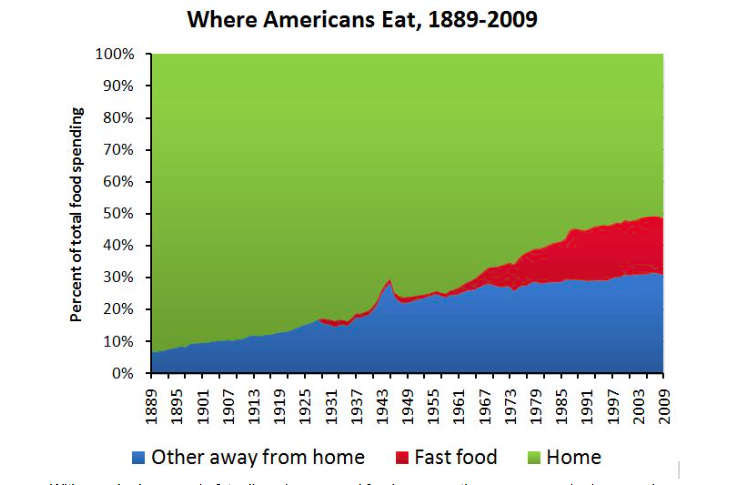
The ratio of home cooked meals to food eaten away from home has immensely increased and, as a result, further complicates (and increases) the actual amount of calories people intake on a daily basis.
The increased commercially prepared food in today’s diet results in added calories from oils and processed food to invoke a physiological desire to buy more.
While carb intake has dropped some, food intake has not as we’ve increased our overall fat intake and kept the processed “low-fat, high-carb diet” foods . If anything, food has become more plentiful and choices are never ending, presenting yet another issue.
Liquid Obesity
If you think people eat too many calories, you should see how many calories get guzzled down unknowingly. Not everyone is knowledgeable in nutrition and a lot of people still think fruit drinks are fine and coffee is harmless. I hate to be the bearer of bad news but your favorite fancy starbucks grande mocha frappe crappy latte plus your go-to fruit juice can be more calories than a big mac from McDonalds.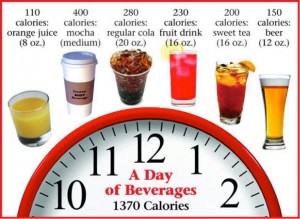
Adults and children fail to adequately adjust food intake to compensate for the consumption of liquid calories.
Restaurants recognize the the profitability and desire of sugary drinks and have capitalized on it. These items cost the restaurant between 5 cents and 20 cents per serving, so huge profit margins are exchanged for huge caloric increases, not to mention more sugar which increases hunger.
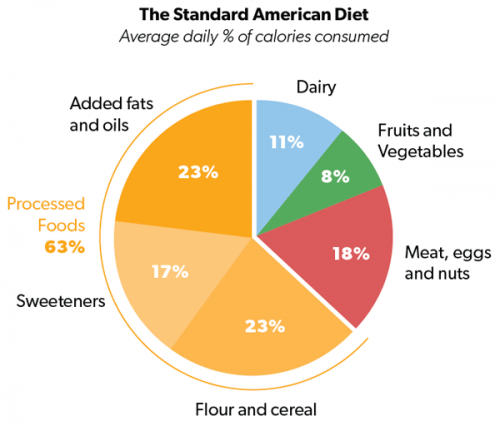
Beverages account for almost half (47%) of all added sugars consumed by the U.S. population.
The other major source of added sugars is snacks and sweets, which includes grain-based desserts such as cakes, pies, cookies, brownies, doughnuts, sweet rolls, and pastries; dairy desserts such as ice cream, other frozen desserts, and puddings; candies; sugars; jams; syrups; and sweet toppings.
More facts on sugary drinks by the Department of Nutrition at Harvard School of Public Health:
- Before the 1950s, standard soft-drink bottles were 6.5 ounces. In the 1950s, soft-drink makers introduced larger sizes, including the 12-ounce can, which became widely available in 1960. By the early 1990s, 20-ounce plastic bottles became the norm. Today, contour-shaped plastic bottles are available in even larger sizes, such as the 1.25-liter (42- ounce) bottle introduced in 2011.
- In the 1970s, sugary drinks made up about 4% of US daily calorie intake; by 2001, that had risen to about 9%.14
- Children and youth in the US averaged 224 calories per day from sugary beverages in 1999 to 2004—nearly 11% oftheir daily calorie intake. From 1989 to 2008, calories from sugary beverages increased by 60% in children ages 6 to 11, from 130 to 209 calories per day, 16 and the percentage of children consuming them rose from 79% to 91%.
- On any given day, half the people in the United States consume sugary drinks; 1 in 4 get at least 200 calories from such drinks; and 5% get at least 567 calories—equivalent to four cans of soda. Sugary drinks are the top calorie source in teens’ diets, beating out pizza (213 calories per day).
Variety & Portions: A Gateway to Over-Indulging
From sampler platters to buffets to the conventional “drink, appetizer, salad, entree, and dessert” meal layout, eating food at restaurants gives a wide variety of foods to eat. Have you ever eaten food until full but then some other food or dessert is presented and you find some extra space in your stomach?
There’s a psychophysiological reason for that!
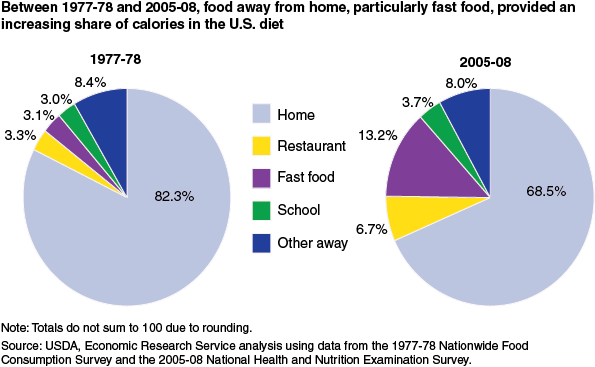
Food variety is a determinant of the palatability and reward value of the meal as a whole. However, to be more precise, variety-induced overeating is usually explained by a related phenomenon called “sensory-specific satiety”. The idea is this: as a meal progresses, we get tired of eating specific foods, but being’ full’ on one food doesn’t necessarily mean we want to stop eating another food. If a variety of foods are present on the table, we tend to eat more total food before feeling satisfied. There is a large amount of evidence supporting the concept of sensory-specific satiety and its relevance to food intake.

The larger the variety of food, the more food consumed. The premise that increasing the variety of food can increase consumption has been found in both genders and across a wide range of ages.
In one study, individuals were given an assortment of 300 M&M candies that contained either seven or ten different colors.21 The taste of each color was identical, but those who were given the assortment of ten different colors at 43% more than those given the seven colors over the course of an hour.
What about the effect of food variety on humans? A number of trials have shown that increasing food variety increases total calorie intake at a single meal, even if the foods all have nearly identical composition. A study published in 2001 showed that this effect is sustained for at least 7 days in humans. Food variety is probably an important part of why human volunteers overeat and gain weight rapidly on a human “cafeteria diet”, and why we tend to overeat and gain fat in the modern food environment, which offers easy access to a huge variety of different foods. (stephen guyenet, Phd).
Portion Control (or Lack Thereof)
Everything has gotten bigger over the last 30 years: phone screens, T.Vs, egos, waist lines and food portions.
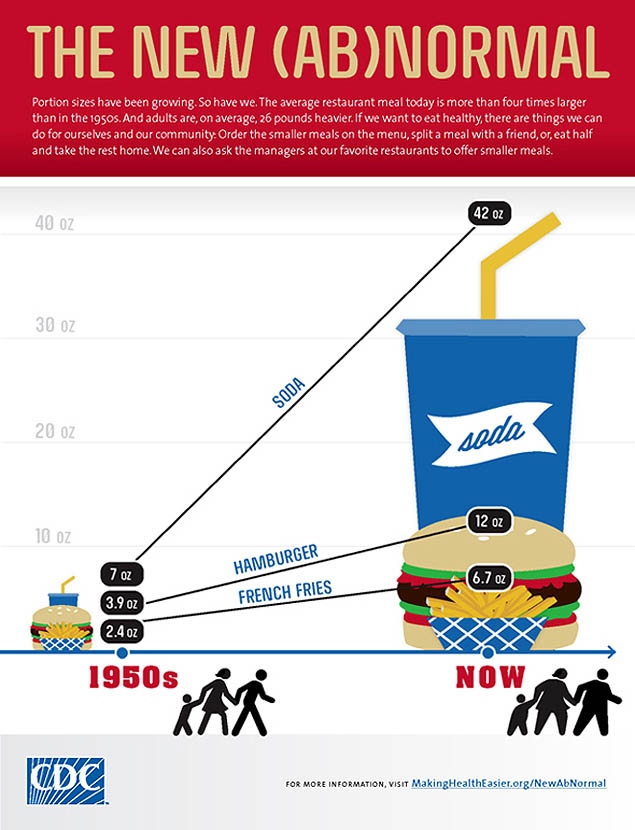
Evidence indicates the size of packages and portion servings in kitchens and restaurants can lead to increased consumption.14,15
What is often considered surprising is that portion size can even increase consumption of less-than-pleasant foods. As an example, consider the findings from the following study. Moviegoers in Philadelphia were given either medium-size or large-size buckets of 14-day-old stale popcorn. When the amount eaten was measured it was found that those receiving the large size buckets ate 33.6% more than those eating from the medium size bucket.
A study by Rolls and colleagues investigated the effect of portion size on intake during a single meal. Portion size had a significant effect on calorie intake. Participants consumed 30% more energy (161 kcal; 676 kJ) when offered the largest portion compared to the smallest.
Availability of Food
Whether you are in a pharmacy, post office, laundromat, park, clothing store or book store, you are sure to find some sort of food. From vending machines to soda machines to interwoven coffee and snack shops like Starbucks, food is readily available literally EVERYWHERE you go. 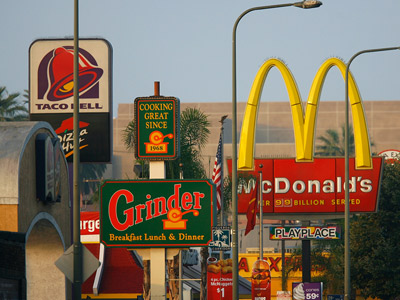
The food environment from the 90’s up until now has been booming. Taking a look at two of the biggest, most rapidly growing & known stores, McDonald’s and Starbucks, you see their growth (and most other restaurant’s growth) correlates alongside the obesity trend.![retail1[1]](https://chrisrudenfitness.com/wp-content/uploads/2016/08/retail11.jpg)

Both Mcdonald’s and Starbucks’ growth run relatively parallel with the growing obesity trend, as do most other restaurants and fast food chains. I am not one to blame an inanimate object for something but I will say that the hyper-palatable, processed food push isn’t just making restaurant owners wallets fat.
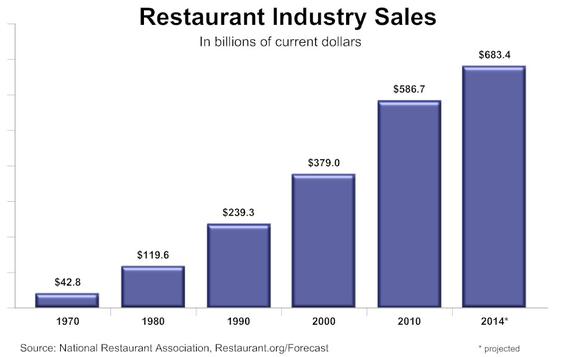
The increased consumption of calories is obviously a big problem. The big contributing factors to the growing obesity epidemic include:
- 425kcal/day increase on average ( +/- 500kcal)
- Severe increase in food portion size, variety, and availability
- Severe increase in use of oils, shortenings, artificial flavors, and sugar additives, engineering food to be extremely desirable
- Severe Increase in commercially prepared food
- Severe increase in sugary drinks
- Huge media push for commercially prepared foods
I have no doubt that food economics and the state of the food industry is a major contributing factor to the obesity epidemic in the way the food environment currently stands (more on this in a future article), but there is another looming issue–the DECREASED calorie expenditure, or activity level nation wide..
Continue reading: Part 3 Exercise, Activity, & Lifestyle
References:
- ENVIRONMENTAL FACTORS THAT INCREASE THE FOOD INTAKE AND CONSUMPTION VOLUME OF UNKNOWING CONSUMERS Annu. Rev. Nutr. 2004. 24:455–79 doi: 10.1146/annurev.nutr.24.012003.132140
-
Chandon P, Wansink B. 2002. When are stockpiled products consumed faster? A convenience-salience framework of post-purchase consumption incidence and quantity. J. Mark. Res. 39:321–35
- Bell R, Pliner PL. 2003. Time to eat: the relationship between the number of people eating and meal duration in three lunch settings. Appetite 41:215–18
- Cutler DM, Glaeser EL, Shapiro JM. 2003. Why have Americans become more obese? J. Econ. Persp. 17:93–118
-
Hannum SM, Carson L, Evans EM, Canene AK, et al. 2004. Use of portion- controlled entrees enhances weight loss in women. Obes. Res. In press
-
Hoch SJ, Bradlow ET, Wansink B. 2002. Rejoinder to “The variety of an assort- ment: an extension to the attribute-based approach.” Mark. Sci. 21:342–46
- Jeffrey RW, French SA. 1998. Epidemic obesity in the United States: Are fast foods and television viewing contribut- ing? Am. J. Public Health 88:277–80
- Kral TVE, Roe LS, Meengs JS, Wall DE, Rolls BJ. 2004. Increasing the portion size of a packaged snack increases en- ergy intake. In press
- Rolls BJ. 2003. The supersizing of America: portion size and the obesity epidemic. Nutr. Today 38:645–49
- Stroebele N, de Castro JM. 2004. The ef- fect of ambience on food intake and foodchoice. Nutrition. In press
- Wansink B, Kim J. 2004. Bad popcorn in big buckets: portion size can influence intake as much as taste. In press

